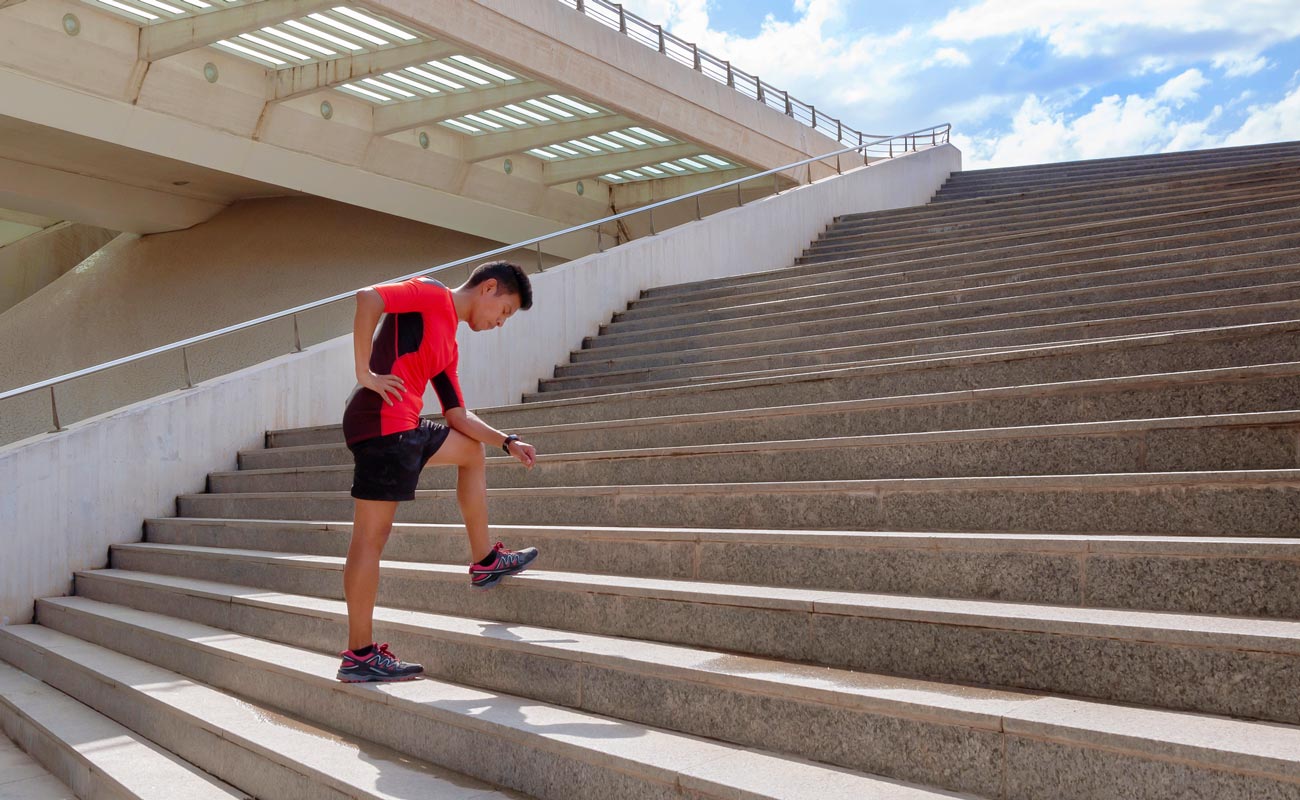You’ve been consistent with your exercise regime, but you’ve realized you’re not seeing the kind of improvement you experienced when you first started. You may be wondering, Why aren’t I gaining more muscle? Or Why am I not losing more weight? In other words, you have hit the dreaded workout plateau.
A workout plateau often occurs when your body has adapted to the demands of your exercise regime, which means you have made progress, but your trajectory has flattened due to a lack of increased challenge. By repeating the same exercises over an extended period, the results you saw in the beginning won’t continue at the same rate. Worse, you may even start to notice that you’re building less muscle and burning fewer calories.
Some of the signs you have hit a workout plateau include:
- Your workouts feel easy
- You have low energy levels
- You lack motivation
- You may be losing muscle tone
- You are losing/gaining weight
Other reasons for plateaus include overtraining, engaging in ineffective training routines, being inconsistent, and not getting enough sleep. All of these factors can contribute to your progress leveling out.
But don’t be discouraged—there isn’t a single fitness professional out there who hasn’t experienced the workout plateau. Here are 6 ways to overcome it and get your progress back on track…
1. Track Your Progress
How do you know you have hit a plateau if you don’t track your progress? There are multiple ways to track your fitness journey, like taking progress photos and recording your workouts in a journal with details like the weights used and the number of reps you have hit. Taking measurements can also prove to be more useful than checking the weighing scale, which may be impacted by various other factors. By tracking your progress you can see the main areas that need improvement and formulate a precise and informed fitness plan to help you reach the next level.
2. Add Variance in Your Routine
You may be dreading the idea of switching to a new routine because you feel like you just got used to this one, but no one said you have to change it completely. The same exercises can be continued, but since your body needs to be challenged to progress, you can look to progressively overload by changing factors of the same exercises like:
- Increase weight: Any strength training regimen should include a gradual increase in weight in order to build muscle and enhance muscle endurance. Try to add a little more weight every time to exercise (increments as small as a quarter pound will make a difference!), and your plateau will quickly revert to steps!
- Increase reps: Alternatively (and depending on your workout goals), you can gradually increase the number of reps in your weightlifting sets. Or try a combination of
- Increase intensity and/or duration: The same principles apply in aerobic exercise, too! If you’re used to running for an hour, try incorporating short bursts of sprints, alternating with periods of jogging…or just run a littler farther each time.
By adding these small changes to your exercises, it can add the necessary tension your body needs to get stronger and fitter. Consistency is also another factor that shouldn’t be overlooked. For example, if you have been training 7 days a week, your plateau may be from overtraining and you should consider switching to 5 days of exercise while resting for 2 days to give your body the time to repair and grow (more on this in point #4).
3. Be Open to Something New
Expose your body (and mind) to some new challenges. They may work even better for your body than what you started with and you might find them more enjoyable. So if your workout largely consists of machines, make a move towards free weights or take a stab at a martial arts or Pilates class. If you like high-intensity workouts, then work on your endurance with swimming. If you’ve only done yoga for years, take the leap with strength training and see how the new routine affects your fitness level.
4. Rest and Recover
Training hard with little rest used to be the regime for many pro athletes back in the day. However, research has found that real growth happens when your body is resting and sleeping. This is the time your body repairs and grows the muscles you worked so hard on and replenishes your energy stores so you can continue performing and progressing. A 2017 study demonstrated a positive association between sleep quality and muscle strength. The male participants who had less than 6 hours of sleep had poorer muscle strength than those who slept for 7-8 hours. In addition, a 2019 study supports that quality sleep should be part of the foundation of an elite athlete’s routine as sleep extension improves factors that impact athletic performance, including reaction time, sprint times and mood. So ensure you get those 7-9 hours of sleep every day.
In addition to sleep, scheduling your weekly exercise regime so that each body part gets the break it needs for recovery can also make a big difference. For example, alternating days for the upper body and lower body can help give each muscle group time to repair and grow instead of overtraining the same areas for days in a row, which can lead to a plateau.
5. Keep an Eye on Nutrition
Nutrition plays a major role in your fitness journey. If you’re in a strength training regimen, which means breaking down your muscles day in and out, but not eating enough nutrients and proteins to build and repair the muscles, you will unlikely see growth. You will also feel fatigued and lack energy for your training. And stray away from low-calorie and fad diets as you need to consume a sufficient amount of calories so that you don’t negatively impact your metabolism. This means eating unprocessed and whole foods with enough protein, healthy fats, carbohydrates and micronutrients to build muscle and recover quickly. To get the maximum benefit from your workouts you need to establish healthy eating habits.
Note: If you are doing all of the above, but coupled with heavy drinking, this will likely undo your efforts. Research proves that excessive alcohol and dehydration are factors that will impair your growth, performance and recovery. So if you want to see results, it’s best to stick to water and stave off alcohol (or at least keep it occasional).
6. Try Working With a Trainer
Although it would be best for it to come from within (and better for your wallet), it could really help having someone to guide you out of your plateau and move towards your goals with expert advice. After all, I’m sure most of you who are struggling with a workout plateau are scouring the internet for exactly that expert advice.
Working out with a professional who customizes your program based on your goals can help you push your limits and guide you toward the correct adjustments that keep you on track. They can also ensure that anything new you are doing is done with proper form and that you are using your energy efficiently while reducing the risk of injury. A good trainer will encourage you, push you to make that last rep and increase your weights at the right time to help you climb out of the plateau.Most importantly, listen to your body. Its response to exercise will tell you when it’s time for a change. Celebrate how far you have come and work towards a new celebration by planning and working on the changes required to reach new heights. Remember – growth doesn’t happen in your comfort zone. And making the necessary adjustments to your workouts and lifestyle will surely help you break out of the dreaded workout plateau.



